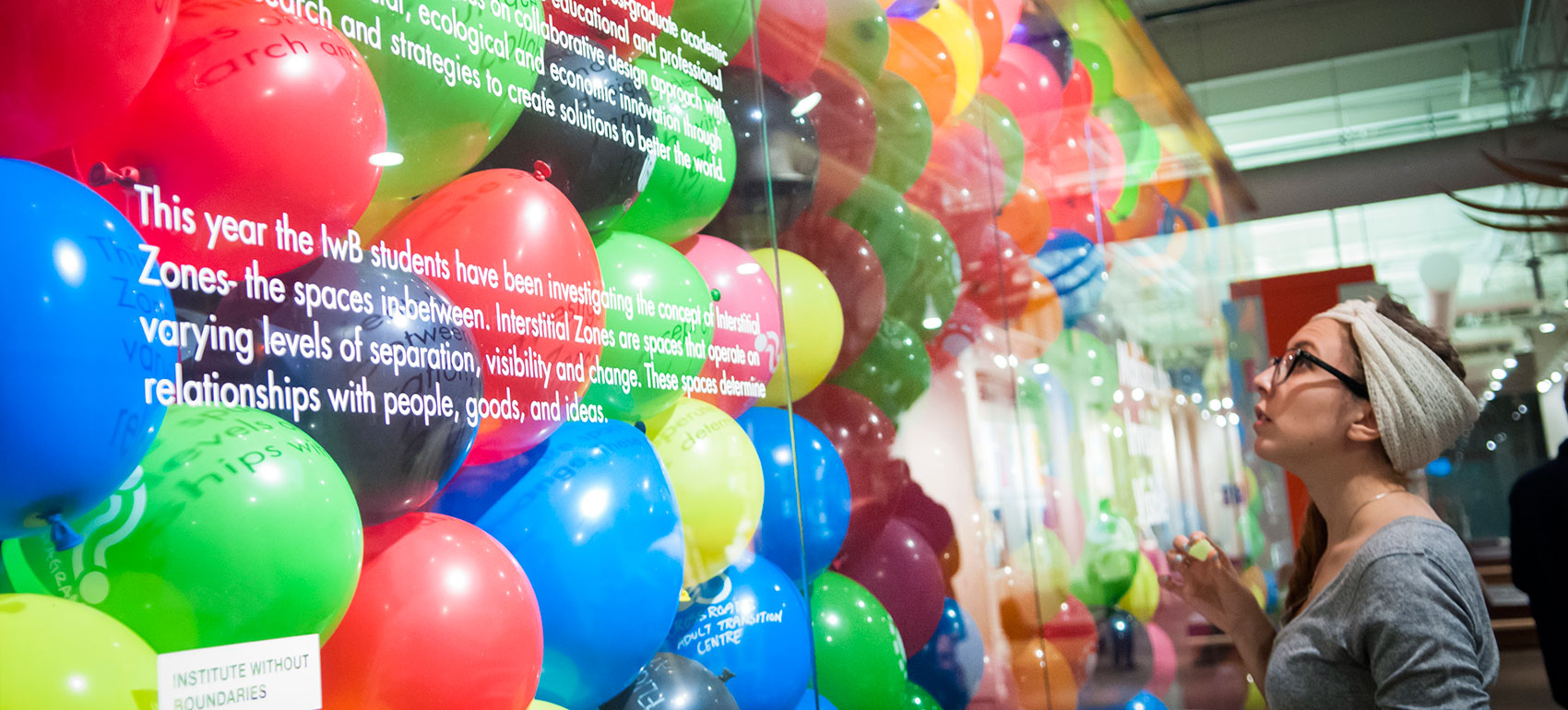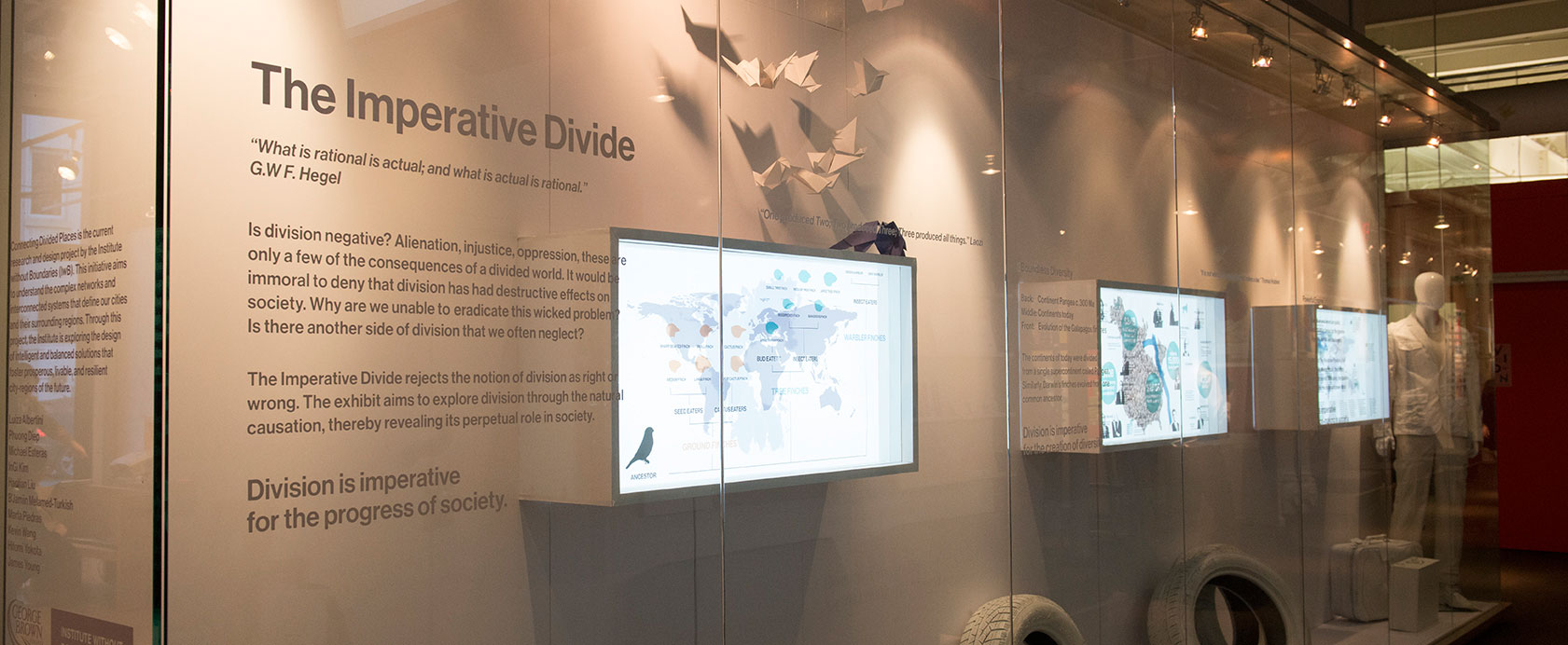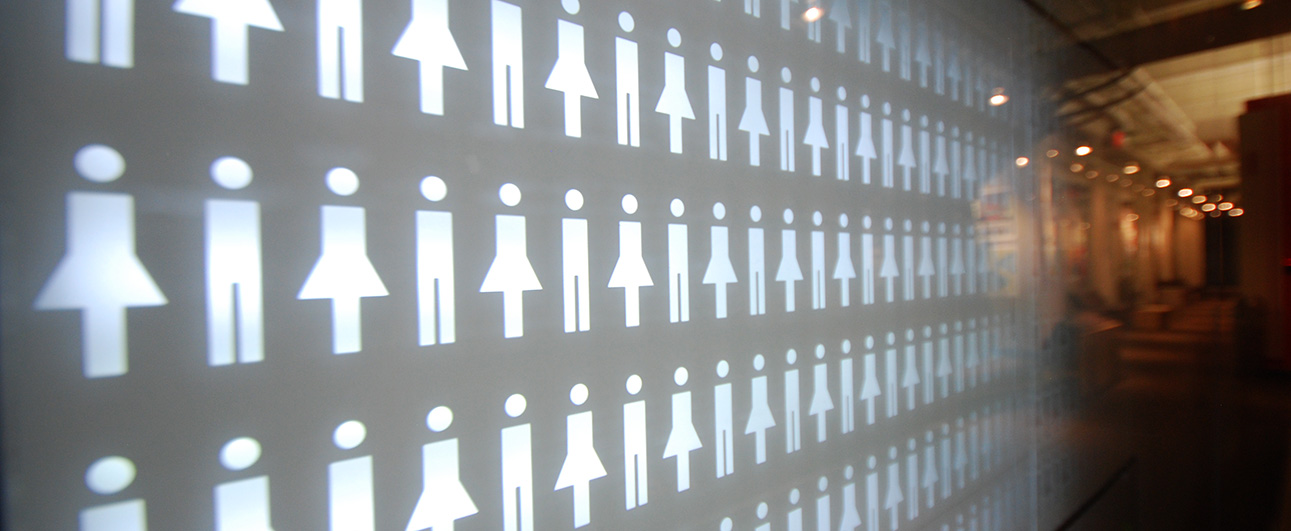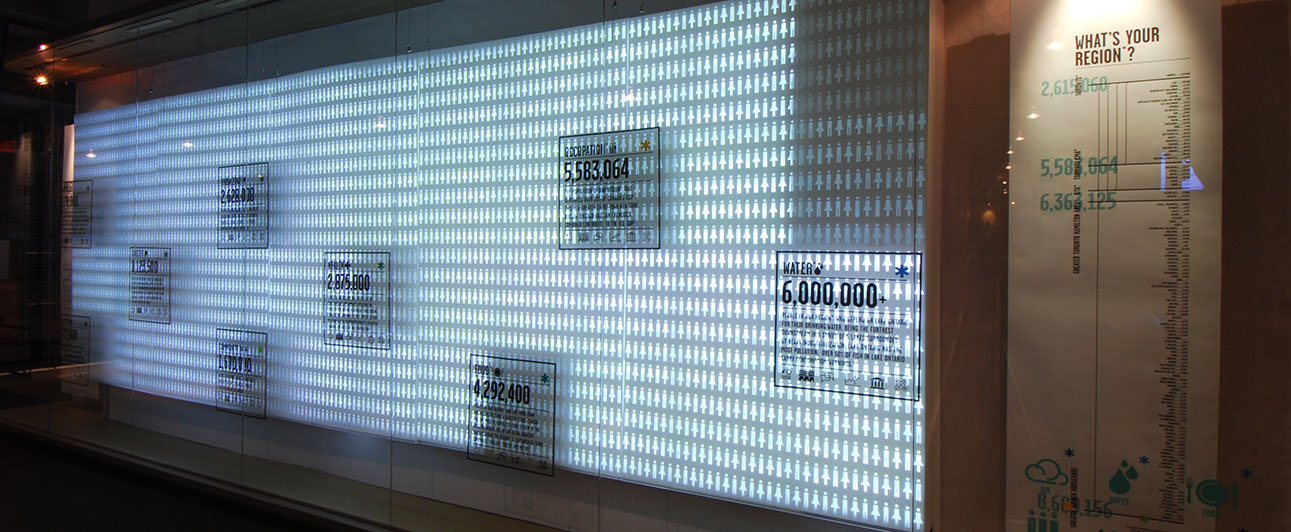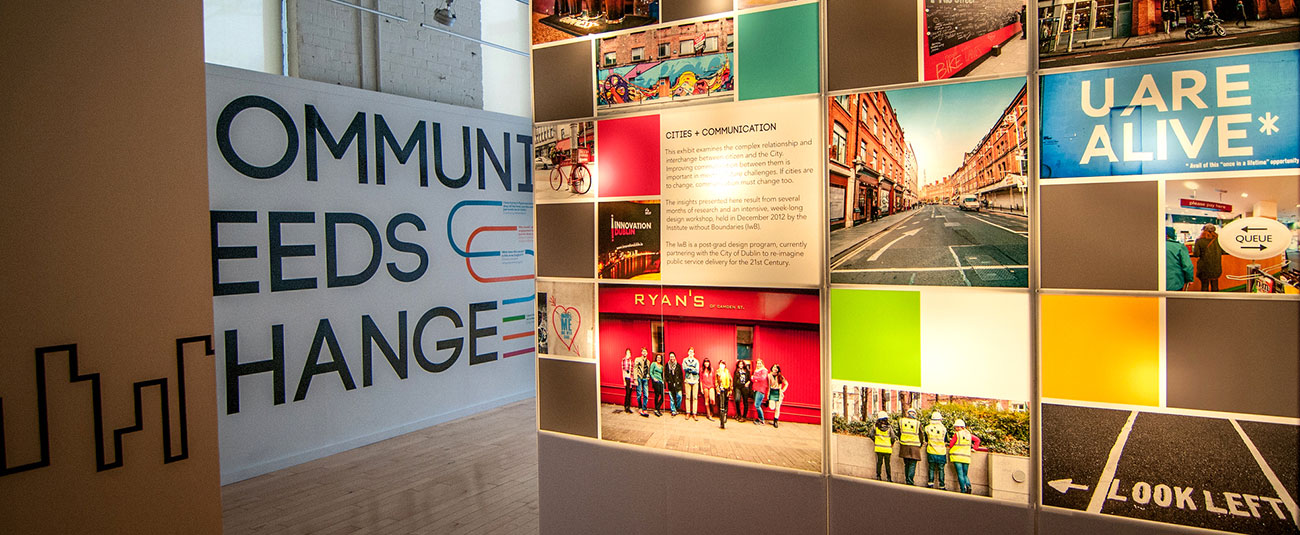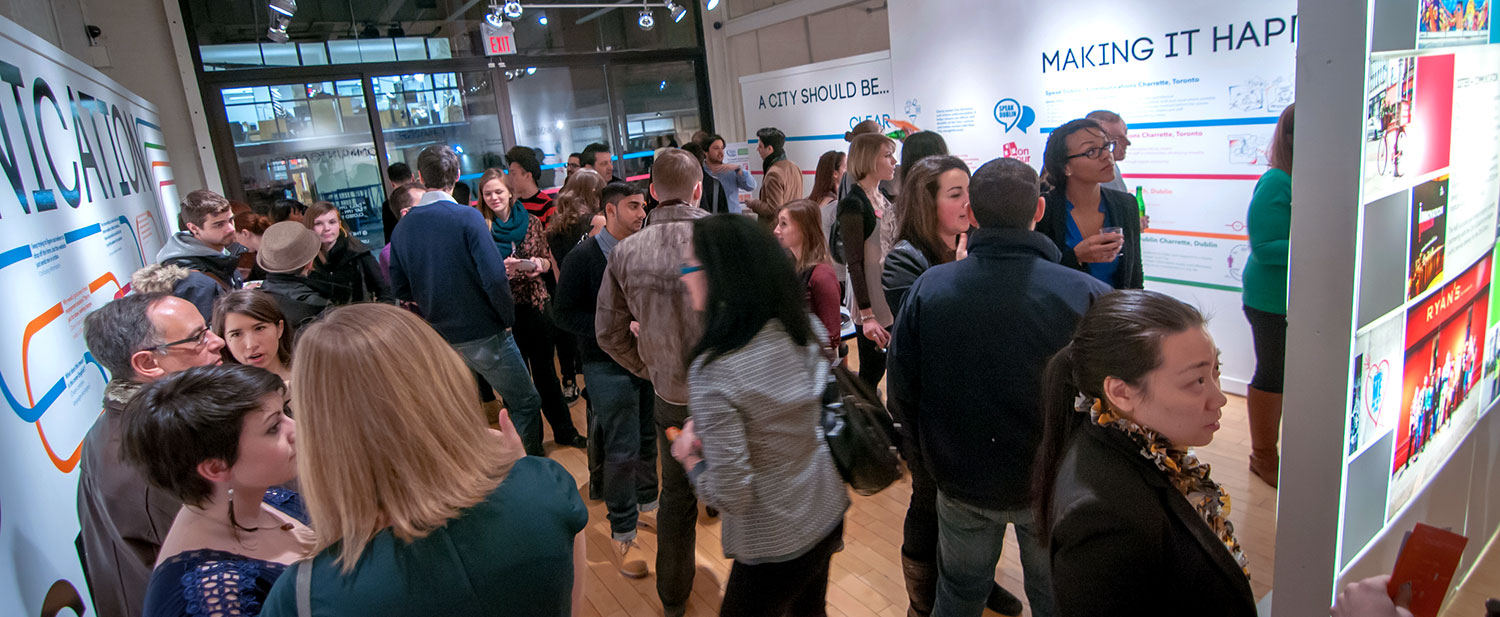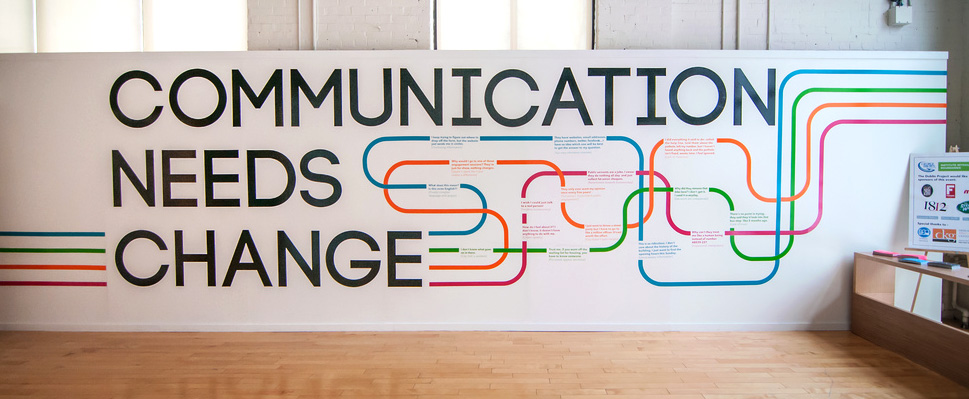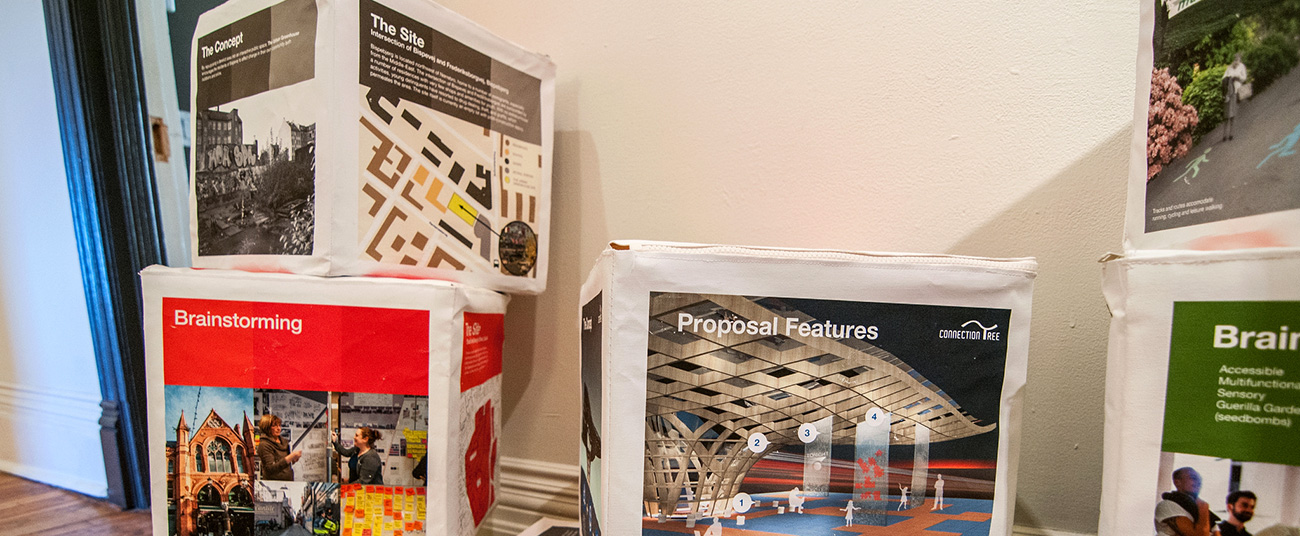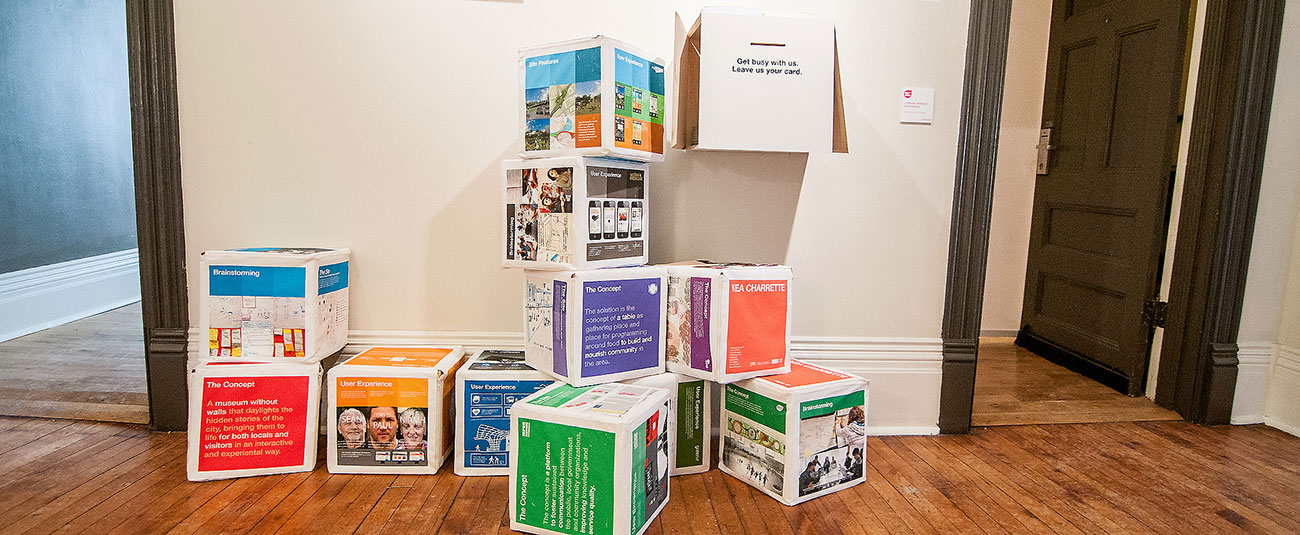Toronto Design Offsite Festival (TO DO)
Overview:
The Toronto Design Offsite Festival (TO DO) is an annual city-wide platform for the exhibition and engagement of independent design in Toronto. The festival takes place yearly in January and showcases unique and immersive prototypes, installations, and art programming. It has attracted the international design and art community to Toronto, celebrating the diversity of Canada’s design scene.
Since 2013, the IwB students, staff and faculty have participated in the TO DO Festival. TO DO has become a regular feature of the Institute’s curriculum and a vital space in which the IwB’s students and faculty have created unique exhibits based on the major project work.
__
Developing unique exhibits in one of Canada’s cutting edge design festivals.
Project Goals:
The aim of the Institute’s participation in the TO DO Festival has been to show IwB student talent and showcase the Institute’s projects and methods.
Participating in TO DO has proven to be a great experience for our students because it is an opportunity to develop exhibition creation skills and be exposed to the professional design market while synthesizing the research themes of the particular study year and sharing the knowledge learned with the public.
“Explaining our ideas to a public audience, in a physical format, required a much greater scope of considerations than a digital presentation: circulation, colour, interactivity, light, size and space. Appropriately, in designing this exhibition we learned to observe the very principles we had developed for city communication with residents. And the value of vinyl. There was a lot of vinyl.”
– Matthew Kelling, IwB alumnus
IwB TO DO Exhibitions:
The TO DO showcases independent design in Toronto and runs during Toronto’s Design Week. The festival takes place throughout Toronto’s different art and design venues, as well as at the sites of individual organizations.
Since 2013, the IwB students, faculty and staff have participated in the TO DO Festival, principally hosting exhibitions at the School of Design Gallery space, at 230 Richmond Street East. But IwB and School of Design staff and faculty project have also been exhibited in other TO DO venues in Toronto.
Summaries of our past TO DO exhibits are available below.
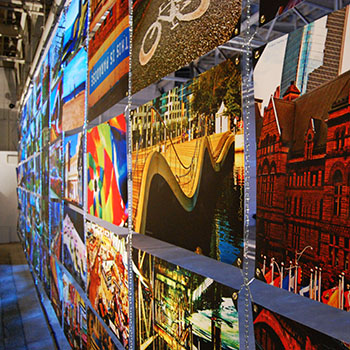
Reflections – 2017
In January 2017, the IwB students created an interactive exhibit called “Reflections” to showcase their work on Symbiotic Regions. Symbiotic Regions was a research and design project run at the IwB in 2016-17 that aimed to reimagine the regional relevance of Toronto’s waterfront.
In “Reflections”, the IwB students attempted to collect the unwritten histories of Toronto’s waterfront in order to create designs that could, in the future, inform the revitalization of Toronto’s waterfront. The IwB students collected people’s memories and stories of the waterfront through cards that were hung around the exhibition. The exhibition was created in partnership with Waterfront Toronto, an organization that is undergoing the largest waterfront redevelopment project in the world.
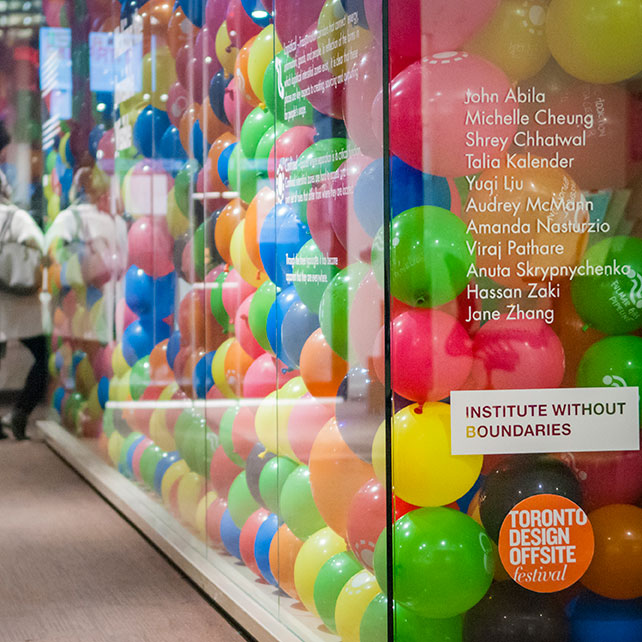
Making the Invisible Visible – 2016
In January 2016, the IwB students exhibited their work on the Interstitial Zones project. Interstitial Zones is a research and design project that aims to promote sustainable economic development in the County Kerry region of Ireland.
“Making the Invisible Visible” was a playful approach to the idea of being ‘in-between.’ The students filled the front School of Design showcase and gallery space with balloons that represented the three typologies the students had identified for interstitial zones: transitional, logistical, and confined in-between spaces. The audience was invited to add to the definition by proposing their own ideas about interstitial zones and writing them on the balloons.
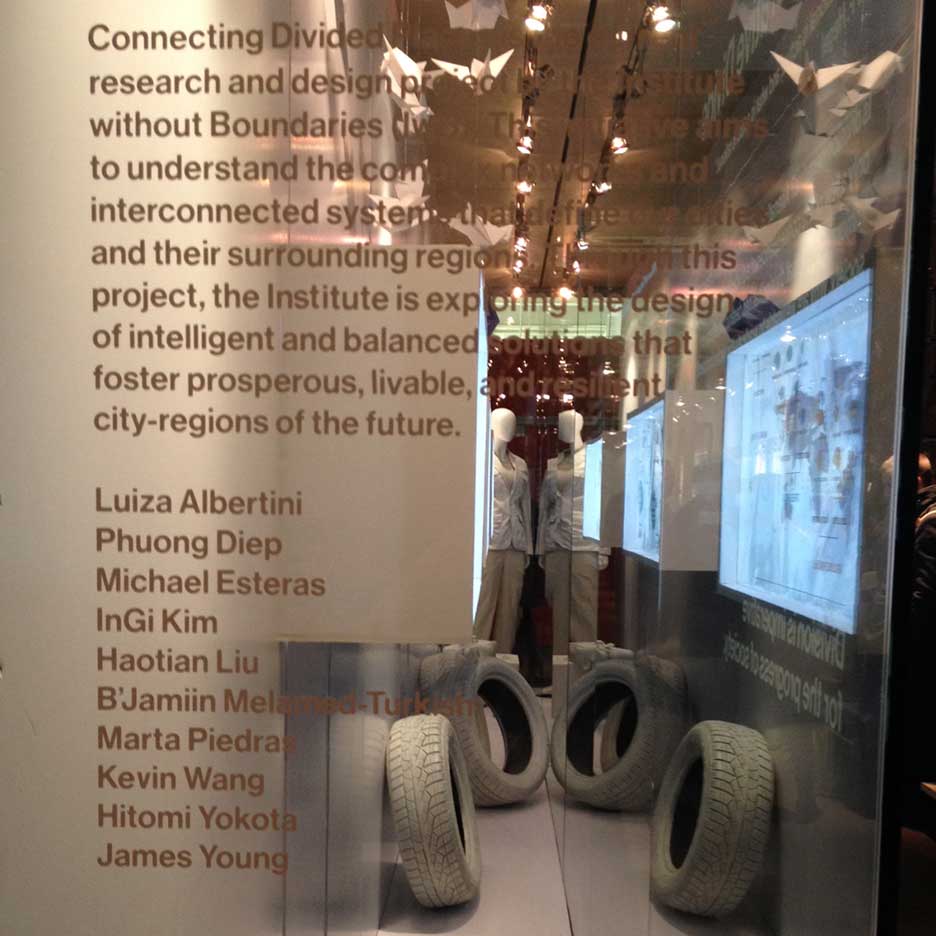
The Imperative Divide – 2015
For TO DO 2015, the IwB students created an exhibition called “The Imperative Divide,” which drew attention to the causes, outcomes and necessities of divide that enable societies to exist. The exhibit was part of the the Institute’s major research project in 2014-2015 called Connecting Divided Places.
Looking at different instances of division, the students created maps and infographics to explore the concept of division. The mappings looked at both positive and negative outcomes of different social, economic and environmental divides around the world. These maps ranged from natural evolutionary division like the development of different species across different continents to human made division such as the interweaving of moral and legal systems to oppress homosexuality.
The IwB students’ aimed to show different types of divisions that exist in human societies.
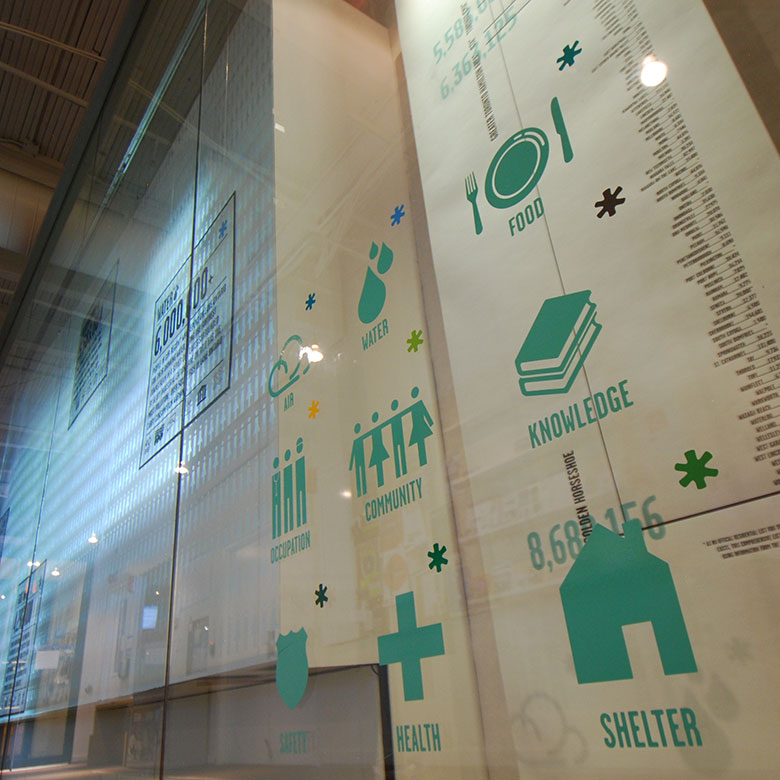
Region – 2014
In January 2014, IwB students created Region, an exhibition mapping the regional relationships between Toronto, Chicago, and New York. Region showcased maps based on original and secondary research for the Gateway Cities, a project that looked at how these cities operate as gateways for their region and further how they connect to each other.
Structurally, the exhibit was composed of a series of luminescent plexi tile-sheets that were illuminated from behind at different intervals to showcase different systems facts and observations made by the students. Rotating and changing illuminated and non-illuminated grid areas, showed the scale of the issues and the regional connections between the cities.
Region was the first public presentation of the IwB students’ work towards The Atlas Project, which summarizes the Gateway Cities and makes the argument for “One Delta,” a regional management system for the megaregion of Toronto, Chicago, and New York.

Communication Needs Change, Change Needs Communication – 2013
The IwB 2013 TO DO student exhibit showcased the work of the Institute for the Dublin Project, a 10-month long initiative that looked at Dublin’s service delivery, focusing on public engagement and the relationship between the municipal government and citizens. This project was the result of the IwB’s 2012-2013 partnership with the Dublin Institute of Technology and Dublin City Council (DCC).
The IwB students’ TO DO 2013 festival exhibition worked with the slogan “Communication Needs Change. Change Needs Communication,” arguing that better public service in Dublin is dependant on how the city itself communicates internally with its employees and externally with its citizens. Thus, better communication, also means new modes of communication.
In the exhibition, the students presented several concepts they were developing towards this challenge, for instance design proposals for DCC that leverage emerging technologies and trends to better connect with its residents. The exhibition itself visualized the systems of communication needed to revitalize public service delivery in Dublin.
The students published their final proposals for DCC in Our Dublin, a book that a proposes a multi-platform system and a transformational program to reimagine public service delivery for Dublin, through the development of digital tools that engage citizens and city staff on mutually selected projects.

The Charrette Process – 2013
In 2013, the IwB had two exhibitions as part of TO DO, the “Communication Needs Change, Change Needs Communication” student exhibition at the School of Design Gallery and a faculty installation piece called “The Charrette Process” at Come Up to My Room (CUTMR), which is a major exhibition space for the festival at the Gladstone Hotel.
The IwB Gladstone installation showcased the Institute’s unique charretting method. Conducting charrettes is an important part of the work of the IwB because collaborative brainstorming, idea generation, and solution making are so central to the Institute’s guiding mission and values. The installation focused on illustrating the playful and dynamic nature of charrettes, at the same time, explaining each step of the process and showing its importance.
Structurally this meant making the installation interactive via plush cubes that could be rearranged, piled, lined, and rotated to show that design thinking and solution making requires multi-perspective thinking. Setting up the exhibition to be freely arranged and rearranged by visitors also communicated the message that each design problem requires different solutions because it is dependent on the relationship between different users and stakeholders.
Project Credits:
2013-2015 IwB Cohorts
IwB staff and faculty
Photo Credits:
Luiza Albertini
Michelle Hotchin
Mel Kapogines
Priscilla Li
Project Tags:
Toronto Design Offsite Festival, TO DO, Come Up To My Room (CUTMR), exhibition, exhibit, design excellence, The Imperative Divide, Connecting Divided Places, Region, Gateway Cities, The Dublin Project

